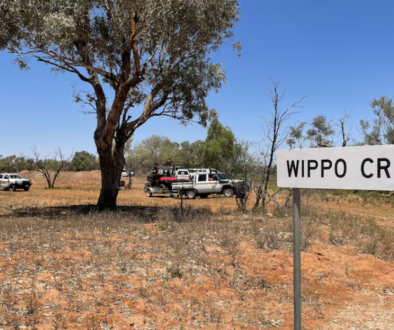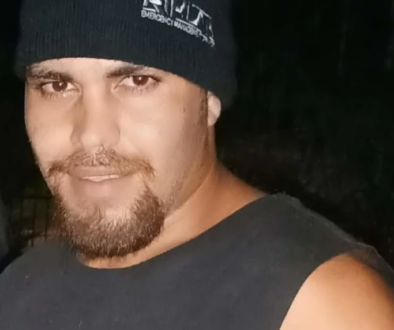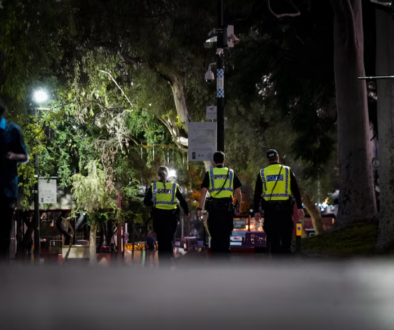Family of man shot dead by police question why they weren’t called in to help
Key points:
- Aubrey Donahue was shot dead by a team of heavily armed police officers
- Donahue’s family questions why they weren’t called in to help diffuse the situation
- There are calls for accountability and a thorough investigation into the circumstances leading to Aubrey Donahue’s death
WARNING: Aboriginal and Torres Strait Islander readers are advised this article contains images and names of people who have died.
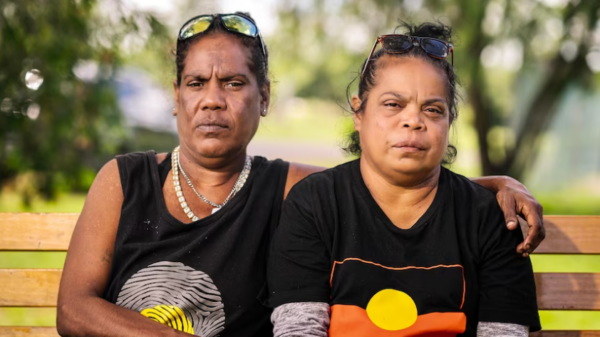
The events of that Saturday in March play on a loop in Desley Ketchup’s mind.
It was the afternoon of March 25 when, on the other side of Mareeba to where she lives, her 27-year-old son, Aubrey Donahue, was shot dead by an elite squad of heavily armed police.
It was a violent end to a siege that had begun that morning and lasted four hours. The Special Emergency Response Team (SERT) had been deployed to the small town from Cairns, 60 kilometres away, and included negotiators with 35 years’ experience.
The public has been told little about what transpired in the house on Love Street that day, and the officers who shot Mr Donahue were not wearing body cameras, something that has since become a requirement for specialist police.
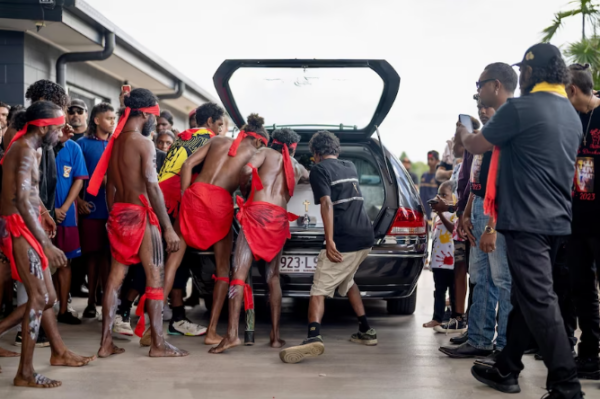
Initially, police said emergency services had responded to reports a man — Mr Donahue — was threatening self-harm, and not allowing his partner to leave the home.
That statement, released the night of the shooting, said: “Around 3:30pm it is alleged the man advanced on specialist officers whilst armed with a knife. Police shot the man. Immediate first aid and CPR was provided, however, the man died at the scene.”
Two days later, president of the Police Union Ian Leavers released a statement stating the police had shot Mr Donahue to save the life of a young woman, understood to be his partner, and that the dead man had a history of serious domestic violence offences.
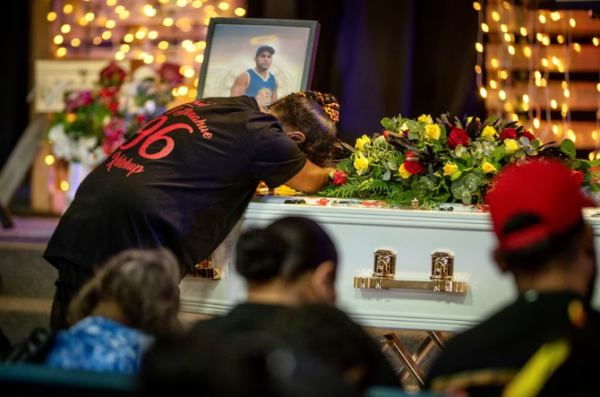
“Police only acted when it was clear that the life of an innocent hostage was in jeopardy,” he said.
“All police involved in this matter performed professionally, responsibly and with great restraint.”
Mr Donahue’s aunt, Jeannie Lyall, said her family acknowledged that Mr Donahue had problems, but did not accept that as an explanation for the shooting.
“He admitted that he had problems, and he was trying to find out his ways of dealing with it … he talked to his mum, he talked to his brothers and sisters, you know,” Ms Lyall said.
“Our whole family thinks that a lot of the way it ended, could have ended up a lot differently,” Ms Lyall said.
Family friend Lex Wotton suggested the versions of events provided by police had been one-sided.
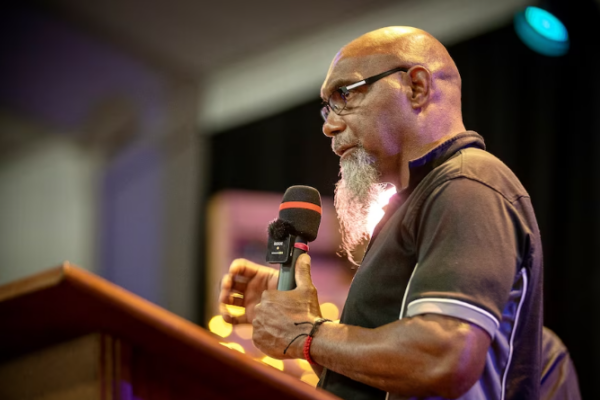
“That’s what police do. They put out there what’s in the best interest of the police,” he said.
“Hopefully, the inquest will bring to light and narrow down why there was a decision made to end Aubrey’s life.”
Ms Ketchup wonders how things might have been different, and what she might have said to her son, had police called her and allowed her into the police cordon.
“[To] this day, I don’t know why I never got called,” Ms Ketchup said.
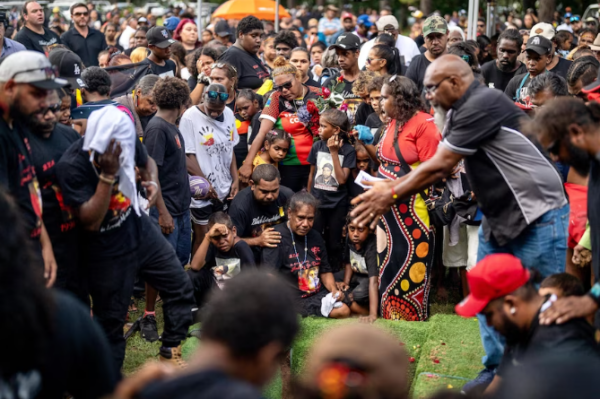
“From [the moment] whoever called triple-0 … I should have got called up.
“And he’s got a twin brother. He would have listened to either one of us. Or his sisters … he always listened,” she said.
Ms Lyle said she did not understand why things ended so violently.
“We want the truth. We’ve asked that, you know, in every kind of way that we can,” Ms Lyle said.
“Because we know that, as a family, that he was ready to turn his life around.”
The question of cameras
Gracelyn Smallwood has advocated for the rights of Aboriginal and Torres Strait Islander people for more than 50 years.
Professor Smallwood resigned from her First Nations advisory position to the Queensland Police over the fact that SERT police were not wearing cameras when they shot Mr Donahue.
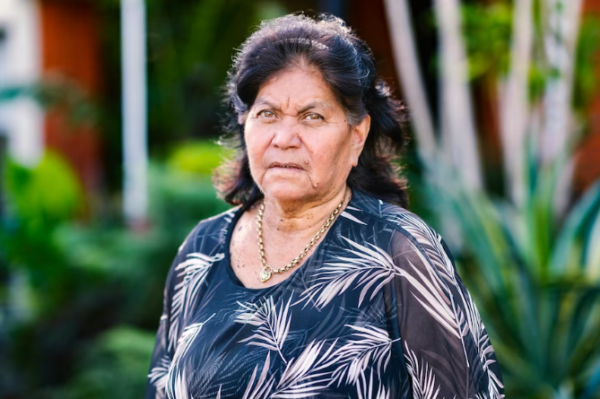
“I still believe that [Queensland Police] Commissioner Katarina [Carroll] is wanting change and is going to reform — but, when you’ve been doing this for 55 years, that made my mind up, just like that,” Ms Smallwood said.
“It’s a given that [cameras] should be compulsory.”
The Queensland Police released a statement confirming cameras had been delivered to SERT Cairns shortly before the death of Mr Donahue, and that the deadline to connect them had been March 31.
“SERT officers now utilise both body-worn and vehicle-mounted cameras during their operations, unless there are justifiable operational effectiveness or safety limitations,” the statement said.
Neither the police nor the police union would answer questions from the ABC’s 7.30 about the death, citing the upcoming inquest.
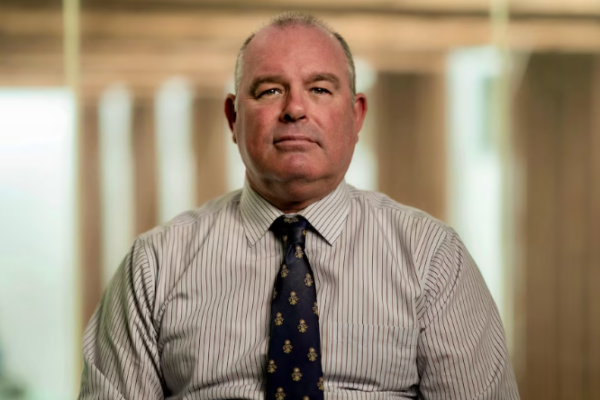
Former police officer now criminologist at Bond University, Terry Goldsworthy, said he believed the cameras should have been in place years ago.
“I understand there was some logistics, in terms of cameras fitting on [uniforms] and giving away their positions in dark areas, etc., things like that — I would have thought that would be worked out much earlier,” Dr Goldsworthy said.
“We’ve had body-worn cameras on general duty officers now for years, I would have thought the tactical issues around SERT and those specialist areas could have been resolved much quicker.
“Because they’re going to be involved in these events that will go to [the] Coroner’s Court, that result [from] the death of someone, we should have all available evidence that we can in those matters there for us to look at.”
Inquest will take place
A coroner will examine the circumstances of Aubrey Donahue’s death, alongside the police response and its use of force.
In a statement, Queensland Police provided information about the way they responded to threats and applied force, and stated they used the minimum force necessary to resolve an incident.
“For Queensland Police, there is no mandated use of force response for a particular threat presented,” a Queensland Police Service spokesperson said.
“Police are taught to conduct a continual threat assessment and to reassess use of force options as the threat levels rise and fall during the incident.”
The spokesperson also confirmed that, in the last reporting period of 2022, Queensland police shot dead eight people, three of whom were First Nations.
Dr Goldsworthy explained there was a “use of force matrix” that would help examine exactly what decisions were made, and why.
He spent part of his career as an inspector with police ethical standards, the branch that reviews police conduct.
“It might be a justifiable homicide, the next question is: Was it an avoidable homicide?” he said.
“So, by that, I’m saying that, yes, you could justify the act. But could you have avoided that act? And, by that, did you need to be in that proximity? Did you need to go into the house? What was the threat level that caused you to interact in that manner?
“They’re all questions that the coroner can be seeking answers to, and the police will need to give the answers.”
Contact us
Please provide a brief description of your claim.

